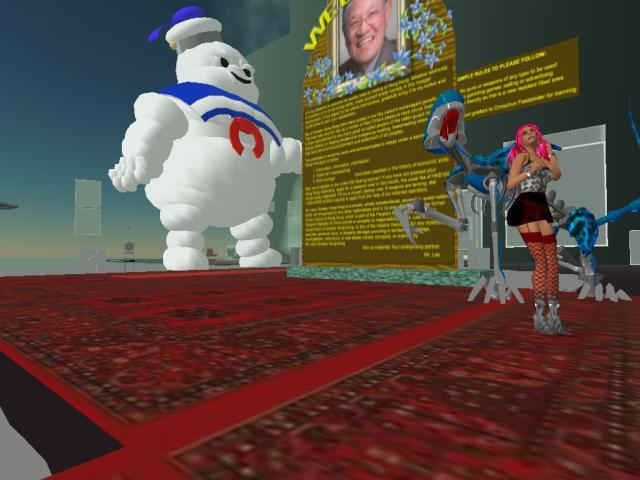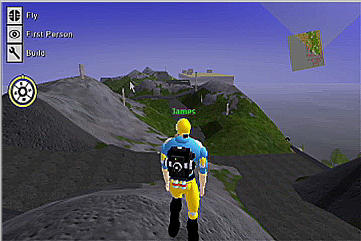 [July 14, 2015]
This page is way out of date, but Second Life is still there, is
still worth visiting, and in fact it is running better than it
ever has. But it has turned into something of a backwater.
[July 14, 2015]
This page is way out of date, but Second Life is still there, is
still worth visiting, and in fact it is running better than it
ever has. But it has turned into something of a backwater.I Led Two Lives!
My Adventures in the SecondLife® virtual world
Copyright © Timothy Horrigan 2006-2008
 [July 14, 2015]
This page is way out of date, but Second Life is still there, is
still worth visiting, and in fact it is running better than it
ever has. But it has turned into something of a backwater.
[July 14, 2015]
This page is way out of date, but Second Life is still there, is
still worth visiting, and in fact it is running better than it
ever has. But it has turned into something of a backwater.
One hot day in July 2006, I happened to read a story in the newspaper about an online computer game called Second Life. And, even though I previously always tried to avoid getting caught up in gaming, this time I was curious enough to check it out. And I got caught up.
The game falls into the general
category of multi-user role playing games. It is not dissimilar to
games like World
of
Warcraft
or The
Sims Online
although it is not
based on a kid's video game.
There is no real violence in the game: there are weapons and
explosives but they don't do much. (One day, I did get shot and
killed two or three times, but that just meant that I was
teleported to a nearby location. I just went right back where I
was and get shot and killed by the same guy again.)

Mr. Lee's Greater Hong Kong: Jiminy (164, 116, 106)
Second Life was a rare case of software getting ahead of the hardware. It has its own client: it doesn't run inside a web browser. (The client may be a precursor of a new generation of 3d browsers: it's about freakin' time for a new generation, I think! The old Netscape model of the mid-1990s has gotten kinda stale, but I digress... ) The client has a very interesting 3d graphics system: it runs slowly but it's still fun to use (and luckily you can move around freely even while waiting for the objects in your immediate environment to download and become visible— or, to use the verb favored by Second Lifers, "to rezz.") The client was also designed from the ground up for 21st century computers, with lots of memory, powerful audio-visual cards, persistent highspeed internet access, etc. The machine on which I started out my journey was a standard-issue 2005-vintage Apple Mac Mini. It represented the minimal platform for SecondLife (though it's pretty damn powerful by most standards): in fact Steve Linden (the Linden in charge of Mac compability issues) once told me (or technically told one of my alts) "It's a miracle SL runs at all on your machine."
Until January 2006, the client was
proprietary, but it has now been released under a GNU
Copyleft license as an open source product. The most popular
client is now the "Firestorm
Viewer" rather than the official one.
Businesses can set up their own separate grids with only serious content allowed, but that's difficult— and employees would still be able to use the clients on their laptops to connect to the Big Grid. And just about anything can happen on the Big Grid.
Another
practical application for Second Life is to use it as a virtual
movie soundstage. The resolution is pretty good if you have a fast
connection and powerful workstations. The imagery at its best is
plenty good enough for streaming video or even for analog
television. The avatars' body language is quite expressive,
although our faces aren't. (We all have beautiful faces, but our
facial expressions usually only run a gamut from bemused to
befuddled.) Unlike real actors, you can program SL avatars to hit
their marks exactly right every time, which makes it easy to edit
different takes together. There are ways to vary the facial
expressions, even though it is difficult to do so spontaneously.
And the default facial expressions are appropriate if you are
doing machinama.
![]() Check out
this funny video of the original beta version of Second Life:
Check out
this funny video of the original beta version of Second Life:

Primitar's Video: he was a grenade-throwing robot. If he
ever got loose in the present-day grid, this dude would create
some serious havoc!

The Forgotten Liars, a
novel by Timothy Horrigan